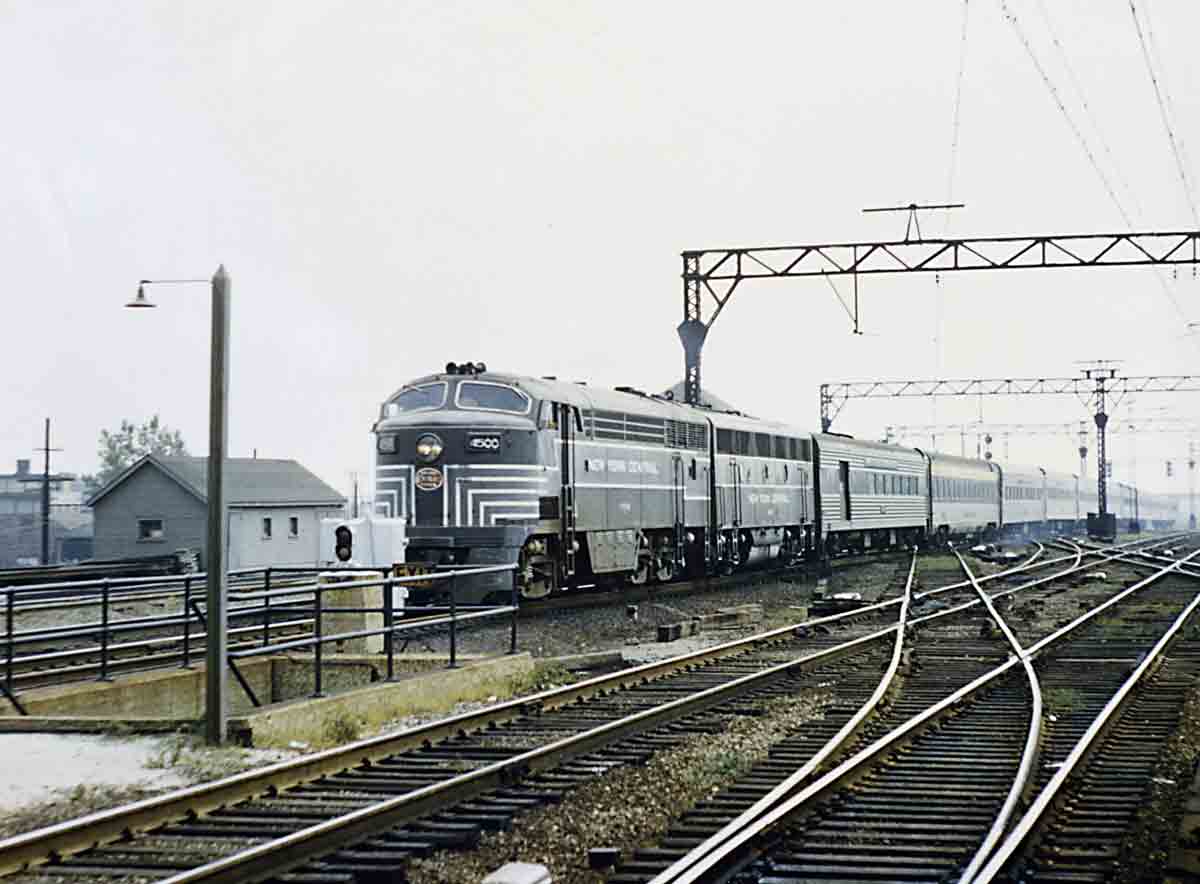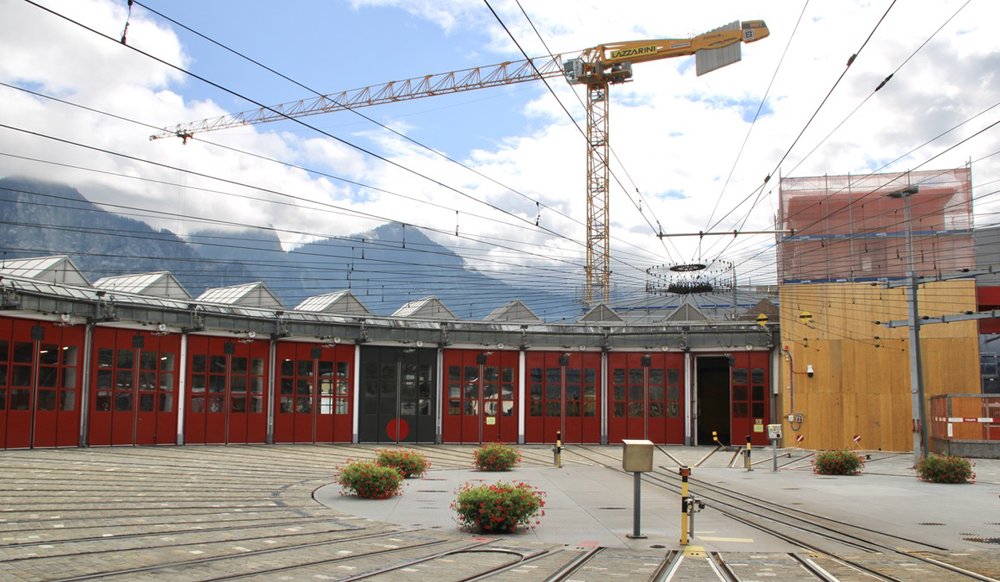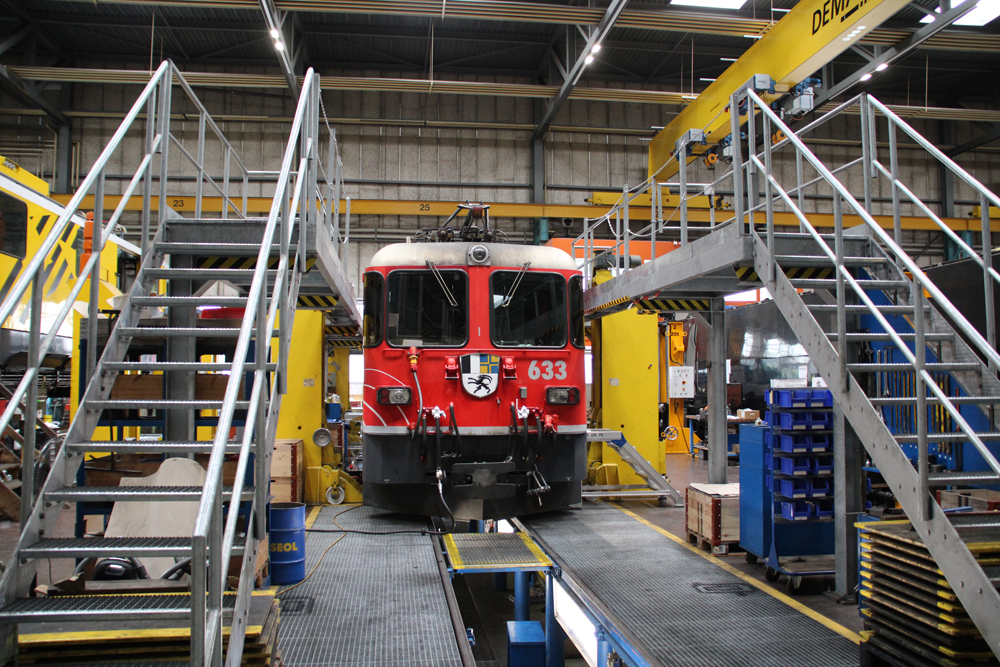Change, however, is the essence of the railroad scene, and by the time the late 1950s had arrived, steam was the exception to the rule, and time was even running out on first-generation diesel power. People were becoming aware that early diesels, such as Alco’s PA and Fairbanks-Morse’s C-Liner, were also classics, not likely to be duplicated.
The case for the C-Liners was never overstated. While the majority of adulation was given to the glamorous PAs, the C-Liners were relatively unremarked. Created when cab units were on the wane in favor of road-switchers, FM’s Consolidation Line of diesel models sold only 165 units to seven railroads, including the two major Canadian systems.
Chicago, being not far from FM’s plant in Beloit, Wis., saw its share. Milwaukee Road had 18 freight C-Liners, second to the Pennsylvania’s 24 and ahead of New York Central’s 12. Possibly the most visible Chicago C-Liners were those on the NYC. The Central’s versions, both freight and passenger, were based at Beech Grove Shop outside Indianapolis, and tended to work on the old Big Four lines.
Rarest, perhaps, were the CPA-24-5s, 2,400 h.p. beasts with a B-A1A truck arrangement; New Haven had 10, NYC 8, and Long Island 4. Built during 1950–52, they would have short careers, especially on the New Haven and NYC, owing largely to electrical problems. NYC repowered its eight with EMD 16-cylinder 567C engines in 1955–56, but the preponderance of EMD E units in Central’s passenger fleet eventually made that work moot.
On the day this photo was taken, August 11, 1957, at Illinois Central’s 115th St.-Kensington station, C-Liners on Big Four trains were not on my mind. (NYC’s Big Four passenger trains to Indianapolis and Cincinnati used IC’s Central Station on Chicago’s downtown lakefront and ran on IC trackage rights as far as Kankakee, Ill.) My purpose in being there was to board South Shore Line train 19 to South Bend, due into Kensington at 12:21 p.m. (Kensington is where the South Shore Line, and NYC’s Michigan Central, diverged from IC’s main line from downtown.)
Having purchased my ticket from the IC agent in the office on the station’s ground floor about noon, I leisurely climbed the steps up to track level. As I neared the top of the stairs, though, I heard the sound of an approaching train. At first I thought it was one of the numerous freight transfer runs IC ran out of Markham Yard, but when I caught sight of the train, I realized it was an NYC streamliner. This shook me out of my lethargic state. I hurriedly got my Retina 1 camera into position and snapped the photo. It was the James Whitcomb Riley from Cincinnati.
My error was in waiting a fraction of a second too long before pressing the shutter button. For all time, there will be a signal box in front of the pilot of CPA-24-5 No. 4500, which trailed an equally rare NYC passenger-service F3B (Central had only two A-B-A sets of passenger F units, initially used on the New England States). That signal box will catch the eye before one thinks of the C-Liner and its unusual five-axle wheel arrangement, and the fact that it and its seven sisters tried unsuccessfully to assault the stranglehold EMD power was to have on New York Central’s passenger diesel roster.
First published in Spring 2008 Classic Trains magazine.
Learn more about railroad history by signing up for the Classic Trains e-mail newsletter. It’s a free monthly e-mail devoted to the golden years of railroading.















This is just an incredible photo, and a treasure with or without the battery box! This photo is a perfect example of how unfortunate it is that NYC’s Indiana Division main from Cincy to Kankakee received so little attention. Plenty of photos exist of Riverside Yard; Indianapolis; Lafayette, but the Indy-Lafayette and Lafayette-Sheff segments, in particular, were pure granger territory full of passenger trains, coal and freight. Thanks for sharing this image.